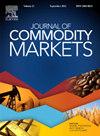How good are weather shocks for identifying energy elasticities? A LASSO-IV approach to European natural gas demand
IF 4.5
4区 经济学
Q1 BUSINESS, FINANCE
引用次数: 0
Abstract
We estimate the price elasticity of residential natural gas demand for 23 European Union (EU) countries using monthly data from 2011 to 2022. While neighboring countries’ weather shocks can in theory act as a supply shifter to identify demand, it is unclear which subset of neighbors in practice should be used, if any. To address this issue, we compare four traditional instrumental variables (IV) models to several post-LASSO approaches: post-LASSO Ordinary Least Squares (OLS), post-LASSO IV, and two-stage post-LASSO IV. We compare these models on a country-by-country basis and for the full panel. We find that the third traditional IV model that we examined performs best in most cases for individual countries. In addition, we find that the first traditional IV model has the most reliable results at the panel-level. Our preferred estimates suggest that country-level price elasticities range from to , with a median of , in line with estimates from the previous literature. We find that residential natural gas price elasticities vary widely across Europe, with Hungary, Germany, France, and Lithuania being the most elastic, and Estonia and Portugal the least. However, Gross Domestic Product (GDP) trends during the energy crisis do not align perfectly with elasticity patterns, highlighting the need for caution in linking demand elasticities directly to economic outcomes. Broader macroeconomic factors also play a significant role in shaping national responses to the crisis.
天气冲击对于识别能量弹性有多好?欧洲天然气需求的LASSO-IV方法
我们使用2011年至2022年的月度数据估计了23个欧盟(EU)国家住宅天然气需求的价格弹性。虽然邻国的天气冲击在理论上可以作为确定需求的供应转移因素,但目前尚不清楚在实践中应该使用哪一部分邻国,如果有的话。为了解决这个问题,我们将四种传统工具变量(IV)模型与几种后lasso方法进行了比较:后lasso普通最小二乘(OLS)、后lasso IV和两阶段后lasso IV。我们按国家和整个面板对这些模型进行了比较。我们发现,我们考察的第三种传统IV模型在大多数情况下对个别国家表现最佳。此外,我们发现第一种传统的IV模型在面板水平上具有最可靠的结果。我们的首选估计表明,国家一级的价格弹性范围为- 0.61至- 0.01,中位数为- 0.13,与先前文献的估计一致。我们发现,欧洲各地的住宅天然气价格弹性差异很大,匈牙利、德国、法国和立陶宛的弹性最大,爱沙尼亚和葡萄牙的弹性最小。然而,能源危机期间的国内生产总值(GDP)趋势与弹性模式并不完全一致,这凸显了在将需求弹性与经济结果直接联系起来时需要谨慎。更广泛的宏观经济因素也在影响各国对危机的反应方面发挥着重要作用。
本文章由计算机程序翻译,如有差异,请以英文原文为准。
求助全文
约1分钟内获得全文
求助全文
来源期刊

Journal of Commodity Markets
Multiple-
CiteScore
5.70
自引率
2.40%
发文量
53
期刊介绍:
The purpose of the journal is also to stimulate international dialog among academics, industry participants, traders, investors, and policymakers with mutual interests in commodity markets. The mandate for the journal is to present ongoing work within commodity economics and finance. Topics can be related to financialization of commodity markets; pricing, hedging, and risk analysis of commodity derivatives; risk premia in commodity markets; real option analysis for commodity project investment and production; portfolio allocation including commodities; forecasting in commodity markets; corporate finance for commodity-exposed corporations; econometric/statistical analysis of commodity markets; organization of commodity markets; regulation of commodity markets; local and global commodity trading; and commodity supply chains. Commodity markets in this context are energy markets (including renewables), metal markets, mineral markets, agricultural markets, livestock and fish markets, markets for weather derivatives, emission markets, shipping markets, water, and related markets. This interdisciplinary and trans-disciplinary journal will cover all commodity markets and is thus relevant for a broad audience. Commodity markets are not only of academic interest but also highly relevant for many practitioners, including asset managers, industrial managers, investment bankers, risk managers, and also policymakers in governments, central banks, and supranational institutions.
 求助内容:
求助内容: 应助结果提醒方式:
应助结果提醒方式:


